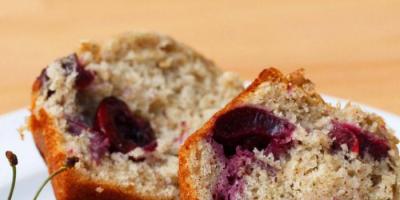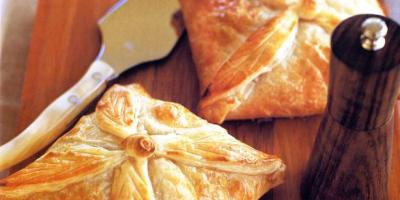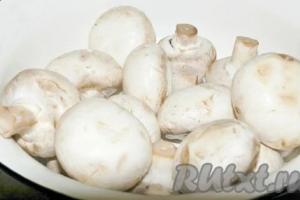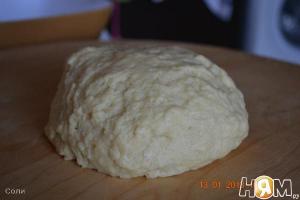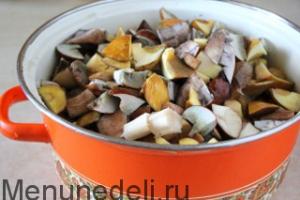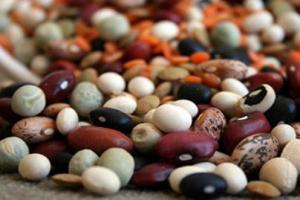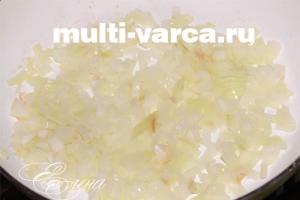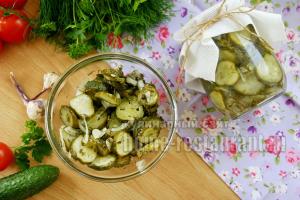Wine yeast– a type of yeast used in winemaking; is a colony of bacteria Saccharomyces cerevisiae, capable of converting simple and complex sugars into alcohol.
Wine yeast can be found on the surface of almost all grape varieties. Today, wine yeast refers not only to the bacteria Saccharomyces cerevisiae, but also to a number of other bacteria used in winemaking; however, it is Saccharomyces cerevisiae that has the greatest resistance to its own waste (i.e. alcohol), and it is this species that lives in wine the longest, and is responsible for the souring of wine.

Today, the use of wine yeast is typical not only for home winemakers, but also for large industrialists, large wine producers, both New and Old Worlds. The use of wine yeast allows you to obtain predictable and constant results. Although some critics blame the widespread use of wine yeast as the reason for the uniform taste of many wines, today almost everyone uses yeast, and the use of natural yeasts has been reduced to a minimum.
Often a situation arises when wine fermentation suddenly stops. This happens because the colony of microorganisms in the wine has won, which can no longer exist at the current strength of the drink; however, the amount of sugar is still sufficient to continue life activity. It is in this case that wine yeast is often used to “ferment” the wort and increase its strength to an acceptable level.
How does wine yeast differ from others?
There are 4 main types of yeast - baker's, wine, beer and spirits. Bakeries are used for baking and for producing low-quality alcohol and moonshine. Brewer's yeast is used for beer, alcohol yeast is used to obtain pure alcohol distillate.
As you might guess, wine yeast is used to make grape must and to produce wine. In some cases, it can be used to produce fruit and berry moonshine, however, even in this case, it is preferable to use alcohol yeast. In general, to produce moonshine and other distillates, it is better to use alcoholic yeast, which we wrote about in more detail in the corresponding article.
Baker's yeast cannot be used for winemaking. Firstly, they greatly spoil the taste of wine, making it more like kvass; secondly, the wort foams very strongly; thirdly, such mash “plays” very poorly. Bread, or baker's, yeast dies very quickly from an increase in the alcohol content in the wort, so the wine stops playing almost immediately.
Microbiology of wine yeast
The common name of wine yeast, as mentioned above, is Saccharomyces ellipsoideus, or Saccharomyces cerevisiae.

There are several types of such yeast, already specific microorganisms, in particular, there are:
- Saccharomyces chevalieri is the most commonly found yeast, most often the main one in the fermentation of red wine;
- Saccharomyces oviformis is an alcohol-resistant bacteria that allows you to obtain alcohol strength of up to 17-18%;
- Torulopsis stellata are round or oval microorganisms that are capable of organizing a ring or film on the surface of the wort.
There are many other strains of wine yeast, you can read about them in detail in another article.
How to choose and buy wine yeast?
The most common products on the domestic market are the products of JSC Yeast Plant.

The company produces products in packages of various weights, from 100 grams to 5 kilograms. Yeast is produced in Belarus. A 250 gram package is enough (according to the manufacturer) for 87 liters of mash (about four 21 liter bottles). According to consumer reviews, the strength of the wort can reach up to 20 degrees! With subsequent dilution with water, you can get more wine than there was in the mash. There are also reviews regarding the use of this wine yeast in moonshine brewing: with a wort strength of 20 degrees, the yield is around 2.5-2 liters of distillate per 10 liters of wort.
Another well-known manufacturer is LALVIN.

As in the previous case, everything is packed in bags of various capacities. The author of these terms has never personally used this brand, however, according to reviews, it turns out very quality product. In some cases, judging by the reviews, additional feeding is required, however, if the technology is followed, LALVIN wine yeast shows a fairly high efficiency in the formation of alcohol. The product can begin to ferment at very low temperatures.
How to use wine yeast to make wine?
The process of using wine yeast is simple. Yeast is added to the prepared must (a mixture of grape pulp and a small amount of sweetened water) in accordance with the proportions indicated on the label. Fermentation begins and continues either until the sugar runs out or until the critical strength of the wort is reached.
If fermentation has stopped, it is necessary to determine whether the reason was low sugar levels or high alcohol levels. In the first case, it is enough to add sugar to continue the distillation; in the second, you need to add water to reduce the strength of the drink and add yeast again. Of course, you should make sure that a temperature favorable for yeast development is maintained at 25-28 degrees. If the temperature is low, the yeast ferments slowly; if the temperature is high, about 29-30 degrees and above, then the yeast simply dies.
Use of wine yeast for other alcoholic beverages

Wine yeast can be used to produce not only wine, but also some other alcoholic beverages.
Moonshine with wine yeast
We have already said more than once that the most optimal choice of yeast for mash and moonshine is alcohol yeast. Wine yeast for moonshine is used quite rarely, since it ferments for quite a long time and does not give a very high yield of product. To prepare wine yeast, they are first diluted with sweetened warm water (to activate microorganisms), after which after half an hour they are poured into ready-made mash. The mash should sit for about two weeks (long enough, I warned you!), after which it can be distilled.
Whiskey with wine yeast
Homemade preparation is also best done with alcohol yeast. We wrote in more detail about cooking at home here. In the recipe indicated in the link, it is enough to simply replace the yeast with wine yeast and be prepared for the fact that the wort will take much longer to reach a delicate strength for distillation.
Apple wine with wine yeast
First you need to take apple juice from 15 kilograms of apples (about 7-8 liters of juice will come out) and mix with 150 grams of wine yeast. It is also worth adding 5-6 kilograms of sugar (depending on the sweetness of the apples themselves), as well as 8 liters of warm water. The finished volume of about 15-16 liters of wort will just fit into a 21-liter bottle for purified drinking water and for coolers. The wort must be left for 10 days in a warm place away from children and sunlight, putting a water seal on the neck of the bottle. After this, apple wine made with wine yeast can be safely drained, filtered and, if necessary, pasteurized. After this, the wine is bottled and sent for storage.
How to make wine yeast at home?
You can make wine yeast yourself. Of course, in quality they will be much inferior to industrial options, however, in the vast majority of cases, to obtain a small amount homemade wine that will be enough.
From berries
To prepare wine yeast, you will need to create a so-called wine starter. It is necessary to take grapes or raspberries, ripe but not rotten, and, without washing them under running water, mix with simple sugar and in warm water until it becomes a thick porridge. It is enough to take about 100 grams of berries, half a liter of water and two tablespoons of sugar. After 2-3 days, when the starter starts to sour and ferment, it can be used instead of store-bought wine yeast. The use of such a starter can significantly reduce the fermentation period of wine. The starter itself must be added to the wort in a very small amount, literally half a glass. Using your own starter is very convenient when the volume of wine produced is quite large.
From raisins

As raw materials for creating a starter that will be used instead of wine yeast, you can use raspberries, strawberries, currants, cherries and cherries. However, the best substitute is raisins. It is better to collect berries for breeding yeast in dry and windless weather, preferably in the morning. There shouldn't be any rain before harvesting, so it's worth waiting out in wet weather. You should choose only those fruits that do not have visible mechanical damage, that are free from cobwebs, dirt, traces of mold and dust.
Old raisins, as well as raisins with traces of mold, cannot be used, as they will simply spoil the wort. It is enough to dip just one raisin into the sugar syrup, after which the ready-to-use starter instead of wine yeast will be ready in 2-4 days. Don't overdo it with sugar or your starter will be too sweet.
If you decide to use raisins, then in this case it is recommended to buy literally 20-50 grams of raisins in ten places, rather than just 200 grams in one place. This will allow you to avoid the unpleasant situation of buying either old raisins or raisins with dead yeast. In addition, raisins are often coated with pesticides and pasteurized to help them last longer. It is logical that this has a negative effect on the efficiency of subsequent cultivation of wine yeast.
From the sediment
If you already had wine grown with a cultured batch of yeast, then simply saving the sediment is enough. Wine sediment contains a large number of both dead and living microorganisms. Just pour the sediment into a plate, dry it in a warm place (never in the sun!), and put it in a plastic bag, so you will always have wine yeast on hand. Yeast is in suspended animation and can always wake up as soon as the temperature and sugar level are favorable. Remember. That at temperatures above 30 degrees the yeast begins to die, so you should not dry the wine lees on a radiator or in the sun.
Yeast is considered the main component of the fermentation process. During fermentation, they help convert sugar into alcohol. In their natural environment, yeast cells are located on berry and fruit skins.
To make wine, wine yeast is used - dry or prepared independently. The latter type is only applicable for making wine at home.
Properties of wine yeast
Oenologists (who study the science of wine) divide the main component of wine into different types depending on their properties:
- fermentation speed;
- shape of yeast cells;
- application for different types wine
The listed properties can affect the color, taste, aroma and strength of the drink being made.
Experts classify yeast cells according to the following properties:
- cultural - created in the laboratory from one type of fungus and used in industrial winemaking;
- wild - made from fungi taken from berry and fruit skins, and used to create wine yeast with your own hands.
It is difficult to breed a cultural variety on your own, since isolating and cultivating one type of fungus requires special equipment and specialists who can correctly identify a particular type of strain and cells.
Homemade wine yeast consists of several strains. In the first hours, when fermentation just begins, all strains are active, then the strongest suppresses the rest.

How to choose the best ones and how to store them
Making your own yeast cells is a popular way to make homemade drinks. Despite this, oenologists advise not to forget about their dry counterparts. Among them, experts highlight the following brands:
- Lalvin EC-1118;
- Lalvin KV-1118.
Yeast for wine Lalvin EC-1118 is used to create red and white wines. The drink turns out clean and transparent, since the fermentation process is possible at low temperatures, which ensures the formation of a minimum amount of sediment. Lalvin EC-1118 is also used in re-fermentation.
- low foaming during fermentation;
- clarification of the drink;
- compact sludge collection.
Lalvin KV-1118 brand is a pure, highly active yeast concentrate. It is used in the production of light sparkling wines, as well as in the production of red and white wines. Dry yeast Lalvin KV-1118 restores the fermentation process, since it contains exclusively grape fungus.
The closed package is stored in a dry, dark place for 2-3 years. An opened pack can be stored for six months.

Ingredients for yeast starter
Dry wine yeast is considered the main ingredient of yeast starter. Despite this, yeast prepared at home is often used in the process of creating a homemade wine drink. For example, raisin yeast is the most popular.
Yeast starter can also be prepared using the following fruits:
- grape;
- figs;
- plum;
- honeysuckle;
- strawberries;
- raspberry;
- rose hip;
- gooseberry;
- currant.
High-quality homemade sourdough can only be obtained if the berries and dried fruits used are added unwashed.
To make yeast, you need the following ingredients:
- 100 g sugar;
- 200 ml water;
- 2 handfuls of dark grape raisins.
Homemade raisin wine yeast recipe
Rules for preparing yeast at home:
- Boil 100 ml of water, pour boiling water over sugar and stir thoroughly until it is completely dissolved. Add 100 ml of unboiled water to the resulting mixture and let cool slightly.
- Wash the container in which the starter will be prepared (it can be a glass bottle with a fairly wide neck or a jar), sterilize and cool.
- Pour the unwashed raisins into the prepared container and pour in the slightly cooled syrup. The container should be plugged with a stopper made of a piece of cloth or cotton wool. Such a plug is necessary for good air passage. The resulting mixture should occupy a little more than half the container.
- Place the mixture in a warm, dry place. To avoid the formation of mold during the fermentation process, it is recommended to shake the container.
- After a few days, the active fermentation process will begin. After 5-6 days the process should stop. The product is ready.
- Strain the prepared mixture using gauze and use it to make a wine drink. The resulting mixture must be used immediately. Can be stored in the refrigerator for no longer than a few days.
If the temperature regime is not observed or low-quality raisins are used to make yeast at home, the following problems arise:
- lack of fermentation process;
- mold formation.
Homemade yeast should not be prepared from an unsuitable product.

Terms of use
After receiving the starter, the next stage begins - preparing a homemade drink.
To receive different varieties wine, wine yeast is added, the use of which must be in the following proportions:
- sweet varieties - 150 g of yeast per 5 liters of raw materials;
- dry varieties - 100 g per 5 l.
To begin the wine fermentation process, previously prepared starter is added to the mashed berries in accordance with the proportions.
The reproduction of beneficial cells begins under special temperature conditions:
- the correct fermentation process is possible only at a temperature not lower than +15°C;
- at low temperatures, fermentation proceeds more slowly, as the activity of yeast cells decreases;
- at temperatures exceeding +15°C, the process occurs quickly.
Fermentation ends at the moment when all sugars are converted into alcohol. During the process, bacteria release special esters that give the drink richness and aroma.
With properly prepared yeast starter, you get a wine whose strength will reach 18°.
And autumn is on the horizon again. The grapes are ripening. With an experienced eye, winemakers estimate how much tasty intoxicating drink will come out of the bunches of the current harvest. Each of them has their own criterion for achieving success. Some people put the quality of the berries at the forefront, others rely on the correct proportion of sugar, while others consider temperature balance to be the main thing in the process of making wine.
However, almost all of them agree that the high quality of the drink will be ensured primarily by good wine yeast. The honor of discovering these single-celled fungi belongs to the famous naturalist Antonie van Leeuwenhoek from the Netherlands, who saw them using the microscopes he created (by the way, the best of his optical instruments provided a magnification of 500 times). And the no less famous French microbiologist Louis Pasteur described in detail the process of yeast fermentation that occurs during wine production. They say that he conducted such research at the request of the French authorities, interested in expanding the export of domestic wines.
Where can a winemaker get high-quality yeast? You can, of course, rely on a product developed in special laboratories. There is an alternative - make your own wine yeast.
Growing wine yeast from raisins at home
 It turns out that this is not such a difficult procedure. We will visit any nearby market, where there are always sellers of sweets from Central Asia. There are up to a dozen varieties of raisins on the shelves, to which we will pay special attention. However, we do not trust our eyes, which are fixed on the amber full berries. Surely they were visited by some kind of chemical during ripening and certainly killed the wine yeast that had settled on the bunches. Instead, we buy lean, bluish raisins and always with tails.
It turns out that this is not such a difficult procedure. We will visit any nearby market, where there are always sellers of sweets from Central Asia. There are up to a dozen varieties of raisins on the shelves, to which we will pay special attention. However, we do not trust our eyes, which are fixed on the amber full berries. Surely they were visited by some kind of chemical during ripening and certainly killed the wine yeast that had settled on the bunches. Instead, we buy lean, bluish raisins and always with tails.
Sourdough recipe
The following ingredients will be required:
- two handfuls of raisins purchased at the market;
- half a glass of granulated sugar;
- two glasses of water.
We also stock up on a liter bottle with a wide neck or a glass jar of the same volume. It is advisable to sterilize this container in order to ensure that it gets rid of the possible presence of foreign microorganisms in it. Next we work in the following sequence:

After a couple of days, the contents will actively ferment. By the fifth day, fermentation will have weakened, and after another day, the starter with yeast can be poured into the wort. If it is not ready yet, the product can be kept in the refrigerator, but not longer than a few days.
Note that raisins do not have a monopoly in the preparation of fermentation agents. Next, let's look at the alternatives.
How to make wine yeast at home from grapes
It is better to use ripe bunches of small varieties of berries. Let's find a glass container in the pantry for making sourdough - liter jar or a large milk bottle, wash it thoroughly and sterilize it. We carry out further steps in the following sequence:

The yeast starter is ready to be transferred to the wort.
What fruits can replace raisins and grapes when making wine yeast?
Wild wine yeast can be found on the surface of almost any fruit and berry. Therefore, almost all of them will be used to make a fermentation agent. First of all this:
- strawberries;
- white currant;
- gooseberry;
- raspberry;
- rose hip;
- plum;
- apples.
The creation procedure is similar to the process described above, where grapes are used. It is recommended to harvest raw materials in the morning or evening in calm, dry weather. It is advisable that there is no precipitation for a day or two before this.
Dose of yeast starter required to create wine
It depends on what kind of drink you want. To make dry wine, you need to add 200 grams of fermentation product per 10 liters of wort. If your goal is dessert wine, the amount of starter needs to be increased by one and a half times.
We hope that, having mastered the provisions of this article, the reader will not have any difficulties in how to make yeast at home. And as a result you will get a wonderful aromatic drink. Important nuance: Never use alcohol yeast to make wine.. They have a completely different purpose - to create strong drink. Such yeast will serve you if you decide to distill moonshine based on grape marc, which many winemakers throw in the trash. Especially for chacha lovers, we will present a few more recipes. As a rule, these are simple processes. And purchase necessary ingredients is not difficult.
DIY alcoholic yeast
- Place two hundred grams of hop cones in a saucepan, add three liters of water and boil for three hours, stirring from time to time. Cool to 40 degrees and strain. Pour into the broth two cups of rye malt and flour and half a cup baker's yeast. Stir the mixture thoroughly and leave it in a warm place for a day. Distribute the resulting yeast mixture among the jars and close tightly.
- Dilute a glass of flour in a glass of heated water and place in a warm place. After six hours, add a tablespoon of sugar to the mixture and pour in 250 grams of beer (preferably dark). Stir thoroughly. The yeast is ready.
- Grind half a kilo by hand rye bread. Pour two glasses of heated water over it, add a handful of raisins and three tablespoons of sugar. Place the mixture in a warm place for fermentation. After 24 hours, strain the liquid and squeeze out the bread. Pour flour into the resulting infusion in such an amount that the mixture resembles the consistency of sour cream. After two to three hours, the product is ready for use.
Good luck in your work in the field of winemaking! And remember what the Ministry of Health said about excessive drinking.
Attention, TODAY only!
Wine yeast is a yeast that is isolated from grapes or fermenting must. These strains are used not only to make wine, but also fruit distillates. Depending on the method of production, wine yeast is conventionally divided into two types: homemade and store-bought.
Domestic ones are propagated by yeast races that live on the surface of berries and fruits (not just grapes). The process is random in nature, since it is impossible to isolate and propagate only one race; often there are two or more races of yeast in the starter at the same time, which compete with each other.
Store-bought strains - the best strains, selected and bred in the laboratory, contain only one race of yeast, the characteristics of which are well known. Such yeast is usually supplied dry in bags along with fertilizing - a set of microelements that promote rapid activation, reproduction and fermentation of sugars by a specific yeast strain.
Advantages of store-bought wine yeast over homemade ones:
- allow more precise control of the organoleptic properties of the drink: taste, aroma, color, strength, etc.;
- do not require long preliminary activation (the process of preparing the starter lasts 3-5 days and there is no guarantee of a positive result);
- If the recommended conditions are observed and the containers are sterile, fermentation with store-bought wine yeast proceeds smoothly and steadily, less foam is released, and the risk of contamination of the wort with pathogenic microorganisms is minimal.
Attention! Only wine yeast is suitable for making wine; it is also recommended for fruit and berry mash. Other types of yeast (alcoholic, brewing, baking) produce too strong bitterness and a distinct smell of alcohol, so they are not used in wine production. At the same time, it makes no sense to add wine yeast to sugar and grain mashes - the fermentation period will increase, but the moonshine will not improve.
 Wine yeast is recommended for any fruit raw material
Wine yeast is recommended for any fruit raw material How to choose the right yeast for wine
Wine yeast strains differ in their place of collection (region) and specific action - unique properties. The collection location is only important if you want to obtain a wine that is historically characteristic of a particular area. For example, Burgundy wines are traditionally made using yeast collected from local vineyards. However, most professional winemakers ignore the region, relying only on the characteristics of a particular strain.
Types of wine yeast
Depending on the specific action, wine yeasts are divided into the following main groups:
- by purpose: for red and white wines, champagne, cider, sherry, etc.;
- quickly and slowly fermented - the duration of fermentation affects both the organoleptic properties and the speed of wine preparation. At the same time, rapid fermentation is not always a positive result - sometimes it is required that the wort ferment longer and be enriched with complex compounds;
- heat- and cold-resistant - able to withstand a range of temperatures at which other similar strains die or go into a state of suspended animation. Such yeast is useful if it is not possible to create optimal conditions for fermentation - the room is too hot or cold;
- alcohol-resistant - most wine strains stop working when the alcohol content in the wort is 12-14%, but certain races can withstand ethanol concentrations of 16% or more. The alcohol-resistant type is mainly used for making sherry and other fortified wines.
- accumulating secondary and by-products of fermentation - these compounds and substances that appear during the fermentation of a particular strain, they significantly affect the aroma and taste of young wines;
- acid-resistant – used if the wort has high acidity;
- other properties of yeast: foam-resistant, sulfite-resistant, capable of quickly clarifying wine materials, etc.
In practice, the characteristics of the future drink are first determined, then the appropriate type of yeast is selected. For grape wines, it is advisable to focus not only on the color of the berries (white or red), but also, if possible, use yeast for a specific grape variety. Wine yeasts that can process high concentrations of malic acid are optimal for apple wines. For other fruit or berry raw materials (cherries, currants, strawberries, raspberries, apricots, gooseberries, etc.), you can take any neutral (universal) strains. Ideally, if the juice is light, it is for white wines; if it is dark, it is for red wines.
Brands of wine yeast
The following manufacturers have earned good reviews among home winemakers: Lalvin, Red Star, SP, Muntons Gervin, White Labs, Wyeast, etc.; Belarusian wine yeast can also be used.
Instructions for using wine yeast
Since the selected strain may require specific conditions, it is best to use wine yeast according to the manufacturer's instructions (should be indicated on the bag).
- Heat the water to +30-32 °C. For one part of yeast in grams, 10 parts of water in milliliters are required, you can also add sugar - 3-5% of the amount of water. Often, 5 grams of yeast is enough to ferment 15-20 liters of wort.
- Sterilize a glass container for diluting yeast with boiling water, then pour in warm water and add yeast. Stir until completely dissolved.
- Leave at room temperature for 20-25 minutes (no longer than 45 minutes). Do not close the lid.
- Add activated (rehydrated) wine yeast to the wort, which has a sugar content of 14-20%. The difference between the temperature of the wort and the solution should not exceed 10 degrees, otherwise the yeast will receive temperature shock. Stir and close with a water seal.
 Foam should appear after rehydration
Foam should appear after rehydration Instructions on the packet may differ from those shown, always follow the yeast manufacturer's recommendations.
Storage
Most wine yeast comes in sealed plastic bags with a gas chamber inside. Shelf life in a cool, dry place (up to +25 °C) when sealed is up to 2 years.
It is advisable to use the opened package within six months and store it in the refrigerator, wrapped in plastic.
Wine is rightfully one of the oldest and most popular today alcoholic drinks. The main key point in its preparation is the fermentation process. It is impossible to imagine without the use of real wine yeast. The appearance and taste of the finished alcohol will directly depend on their quality.
In order for fermentation to proceed correctly, the finished wine has a beautiful color, good aroma and excellent taste, yeast must be selected and used correctly.
All wines existing today are divided into dry, sweet, semi-sweet, sparkling, fortified and low-alcohol. Depending on their color and appearance, they can be red, white or pink. For each type of wine, it is necessary to choose the right variety of yeast. It is their correct choice that is the main rule and at the same time the key to the successful production of quality wine.

To activate the fermentation process, wine yeast must initially be mixed with berry or fruit mass, which is the production raw material. The fermentation process will last exactly as long as the fungi completely process all the sugar. Its completion will be indicated by sediment at the bottom of the container and the absence of strong gas formation.
The following rules must also be observed:
- The optimal fermentation temperature is from 15 to 20 degrees.
- The liquid should not be exposed to direct sunlight, as it has a detrimental effect on yeast microorganisms.
- The correct dosage of this component must be observed. Consumption per 10 liters is: dry yeast 200 g, yeast starter 300 g.
Attention! It is also possible to use the grounds remaining at the bottom of the container after preparing the starter as a yeast substitute. But only when the leaven has already fermented. In this case, the consumption will be 100 g of grounds per 10 liters of liquid.
To make wine at home, only wine yeast can be used. Bakery and alcoholic varieties of the product are not suitable. They will not allow you to get really high-quality wine and are only suitable for making mash.
In this video you can clearly evaluate the work of wine yeast:
How to make it yourself at home?
If it is impossible to purchase special wine yeast, then you can prepare it at home yourself. To obtain yeast starter, various types of berries and fruits can be used. Most often, berries with delicate pulp and thin skin are used, such as raspberries, currants, grapes, and strawberries. Their use makes it possible to obtain not only homemade yeast of excellent quality, but also to give the finished drink an unusual, subtle and delicate natural aroma.

All types of fruits and berries cannot be washed before use. It is on their surface that the necessary microorganisms are located, which will turn the berries into natural wine yeast. Those that have a thin whitish coating on their surface are considered especially valuable. It is this that is evidence of the presence of the necessary yeast microorganisms on the surface of the berries.
From raisins
Raisins are the most popular raw material when preparing homemade wine sourdough; they cannot be washed before use, just like fresh berries. It is in unwashed raisins that the highest concentration of necessary microorganisms is found.
It is prepared very easily and quickly in two ways:
- It is necessary to mix 100 g of granulated sugar and 100 ml and heat the mixture until the sugar is completely dissolved over low heat. Add another 100 ml of room temperature water to the syrup. Pour two handfuls of unwashed raisins into the resulting mixture and mix everything. Then cover the dishes with gauze and put away for fermentation for 7 days. After this time, the starter is filtered through cheesecloth and used for its intended purpose. The optimal temperature for fermenting sourdough is 20-24 degrees above zero.
- It is necessary to grind two handfuls of raisins using a meat grinder or masher to a mushy consistency. Place the resulting mass in a bottle, add half a glass of sugar and 1 glass of water. Close the neck of the container with a cotton ball or piece of gauze and leave in a warm place for 3 days. After 4 days, strain the mixture and use it to make wine.
Reference! Homemade wine yeast is always used in liquid or puree form. Products industrial production sold in the form of dry powders.
For long-term storage This type of raisin wine starter is unsuitable. It must be used within the first 24 hours from the moment of preparation. After this time, the concentration and viability of the necessary yeast bacteria is significantly reduced.
Video for a clear understanding of the entire process:
Using a similar technology, you can prepare homemade yeast from any berries.
Factory and “wild” yeast
You can purchase truly high-quality factory-made wine yeast only in specialized stores. On their shelves there is a fairly wide range of different types of yeast from different manufacturers. It is quite difficult for a novice winemaker to understand such a wide offer. Therefore, you need to know that all these products are divided into three large groups:
- Torulopsis stellata are microorganisms with an oblong shape. They are used only for preparing expensive wine products with mold. They are not suitable for making any other type of wine.
- Saccharomyces chevalieri, have the shape of an ellipse and are most often used in home winemaking. Suitable for both red and white wines.
- Saccharomyces oviformis— these microorganisms are egg-shaped and have increased resistance to alcohol. They are ideal for making homemade high-strength wines and port.
These are the main varieties of industrial wine yeast. Depending on the manufacturer, other types may be presented in the line. Typically, the KV mark has products that not only allow you to prepare delicious white, rose wine or champagne, but also give it a more pronounced natural grape aroma and color.
The EC mark on the yeast indicates that it can be used to make red and rosé wines with a tart aroma and a refreshing taste.
When choosing and purchasing factory-made wine yeast, it is very important to carefully study the manufacturer’s instructions and recommendations. Failure to follow these tips, violating the dosage or using the wrong type of wine microorganisms will simply result in the transfer of money and products in vain.

The most popular factory products of this type are Lalvin EC-1118 and Lalvin KV-1118 yeast. They are of high quality. It is the use of such yeast that makes it possible to obtain truly tasty and natural wine with a beautiful color and aroma at home. An undeniable advantage of such factory products is its ability to restore the fermentation process if it has been disrupted.
Conclusion
Making wine at home is actually not that difficult. Correctly observing process and using only high-quality and fresh raw materials, even a novice winemaker can achieve great success. But main collateral Success lies in choosing the right and natural wine yeast.
